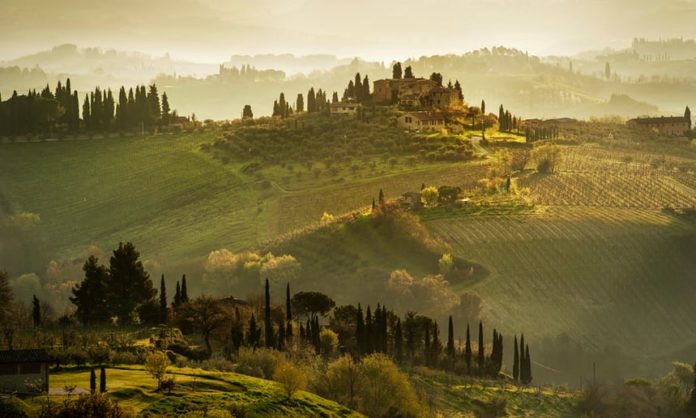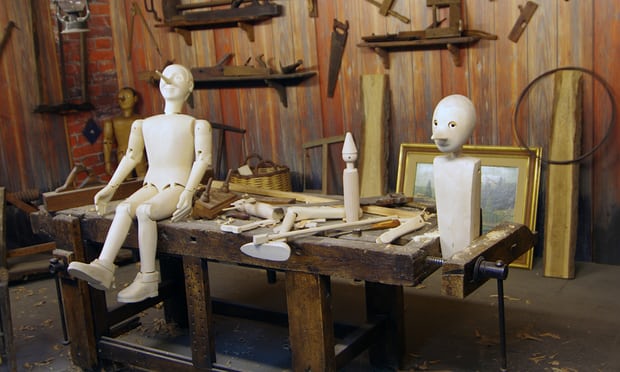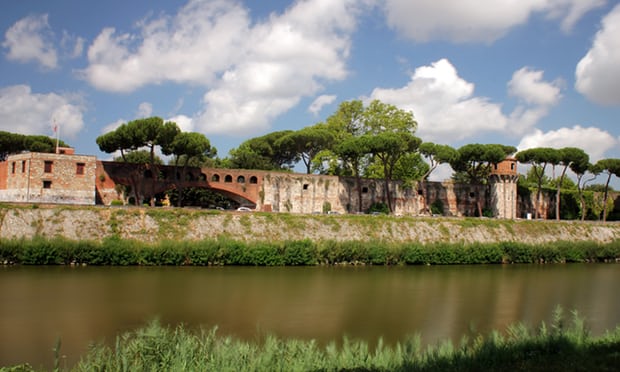
The home of Pinocchio
Florentine Carlo Lorenzini used the pen name Carlo Collodi – Collodi being his mother’s birthplace – when he wrote The Adventures of Pinocchio. These days, the small Tuscan town made famous by his mendacious marionette is home to Pinocchio Park, a sprawling playground filled with great bronze sculptures inspired by the original story.
Bake bread like the angels
Saint Zita was a peasant servant girl in the 1200s who did everything for the poor people of Lucca, even giving away food and clothes from her masters. It is said that angels took on Zita’s bread-baking duties, while she attended to the poor. When she died, she became the patron saint of the city, and of servants and maids everywhere. On her feast day, 27 April, Italians bake bread to celebrate her work, and when they lose keys, they call to her for help finding them. Visit her resting place in the Basilica of San Frediano, Lucca.

Be spellbound in Mount Matanna
Many Tuscan folk tales have a macabre, magical edge. Take the story of Rosina – a woman who was first blessed with a beauty like the moon, then cursed to turn into a snake at the first sight of sun, by toads she discovered under a turnip. A spell in a fired-up oven – what else? – was the only way to reverse the spell, and it duly did, bringing a happy ending for all. Less toady witches are said to frequent the Apuan Alps, with Mount Matanna a favoured hag hotspot. The area is also excellent for gentle hiking, while telling stories along the way, of course.
Discover Dante’s infernal inspiration
In the historic San Martino quarter of Pisa sits the private garden of the Ufficio Fiumi e Fossi. It is said that here once stood the house of Count Ugolino, the 12th-century politician fictionalised in Dante’s Inferno. Ugolino was imprisoned for betraying the Pisan people and, in Dante’s version, becomes a cannibal after being driven mad with grief. Visit the Ufficio Fiumi e Fossi to see where this tragic character once lived, then take your picnic to nearby Giardino Scotto, a medieval fortress park, with a kids’ playground and open-air theatre.

Tackle the labyrinth’s golden guardians
The Labyrinth of Porsenna – a maze of aqueducts that run under the city of Chiusi – is a sight to behold. Legend has it that when famous Etruscan ruler king Porsenna died, he was buried in the labyrinth and his sarcophagus was kept in a golden chariot, pulled by 12 golden horses and guarded by a hen and no fewer than 5,000 chicks – all made of gold. Take a tour of the labyrinth to see if you can find them.
Meet the ghost of the White Woman
Vincigliata Castle, perched in the town of Fiesole, above Florence, is the scene for the legend of the White Woman, who fell in love with the son of a rival family. On the day of their wedding, the bride’s brothers brutally killed the groom, and the bride died soon after, of a broken heart. Take a tour of the impressive castle, where her spirit is said to still haunt the rooms.























